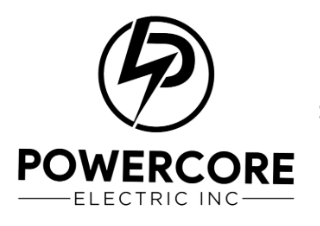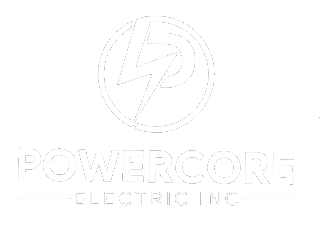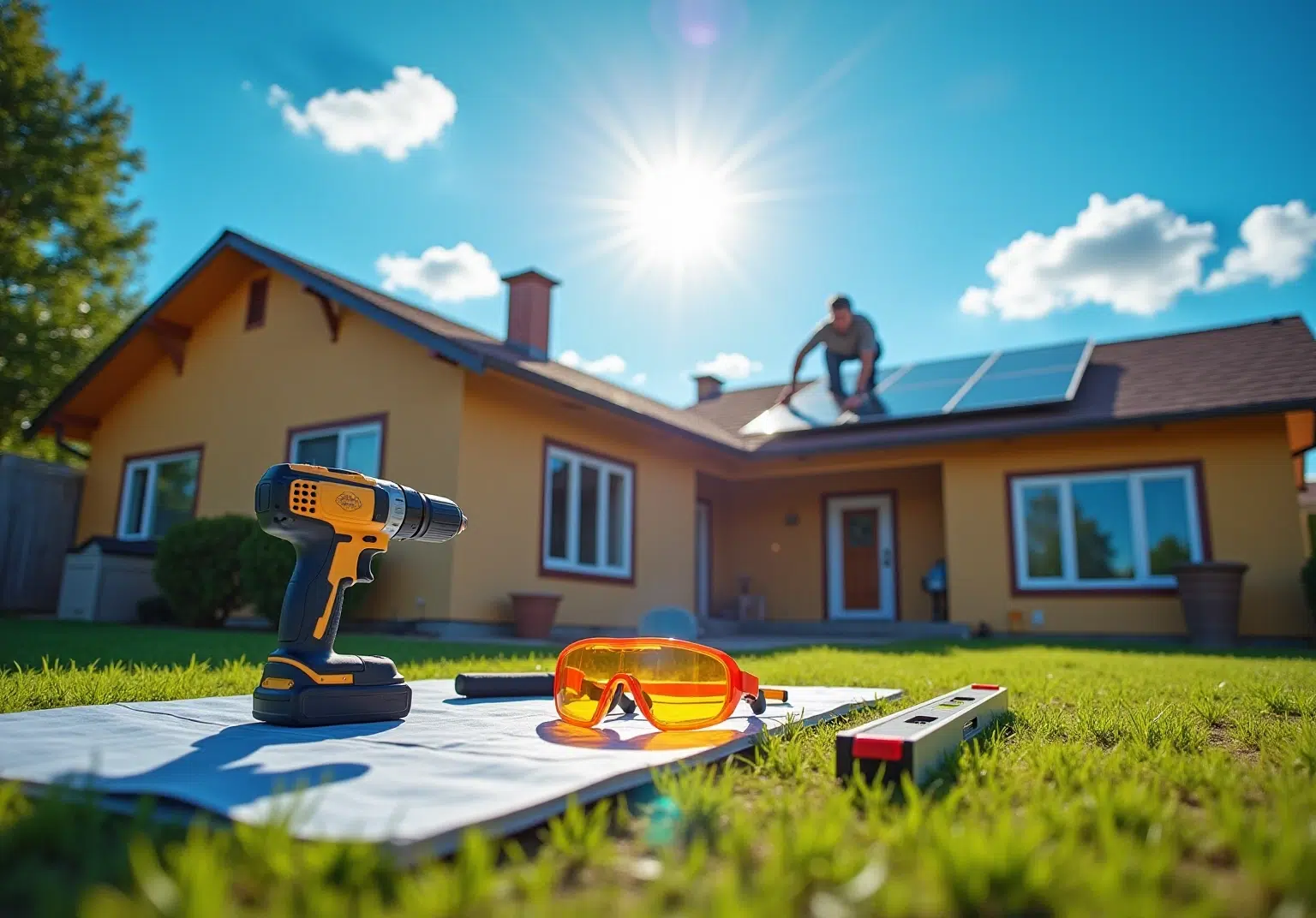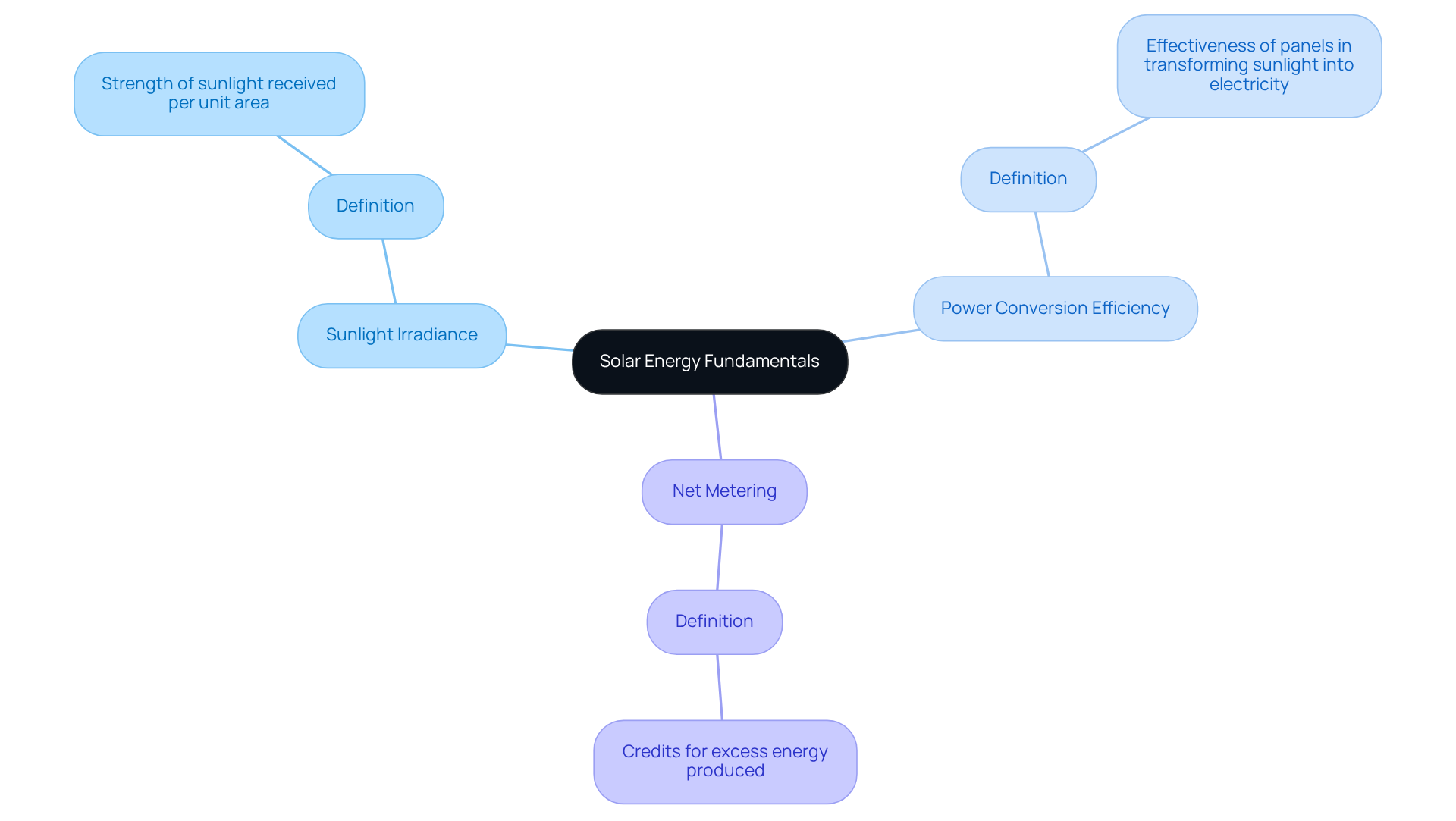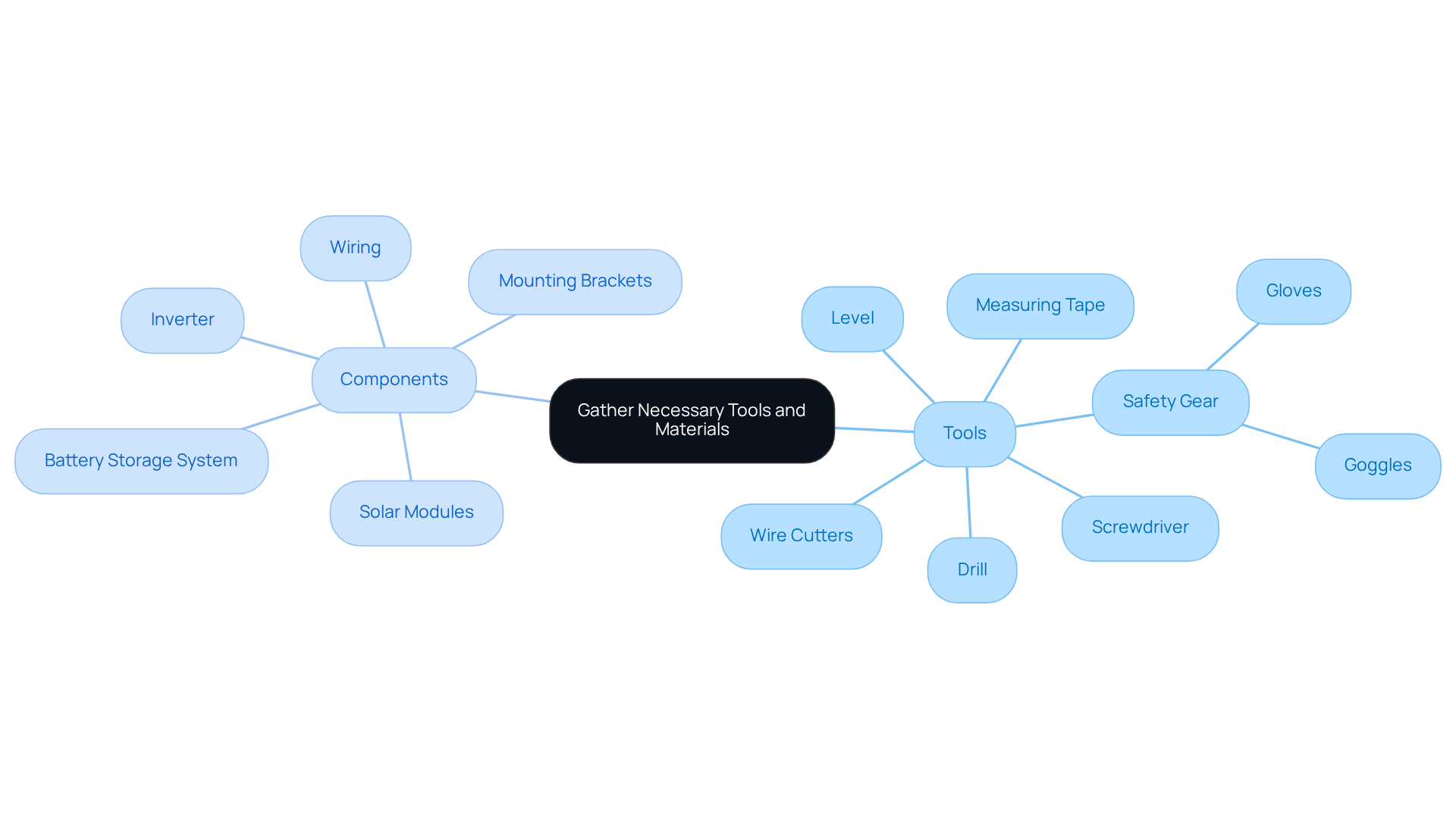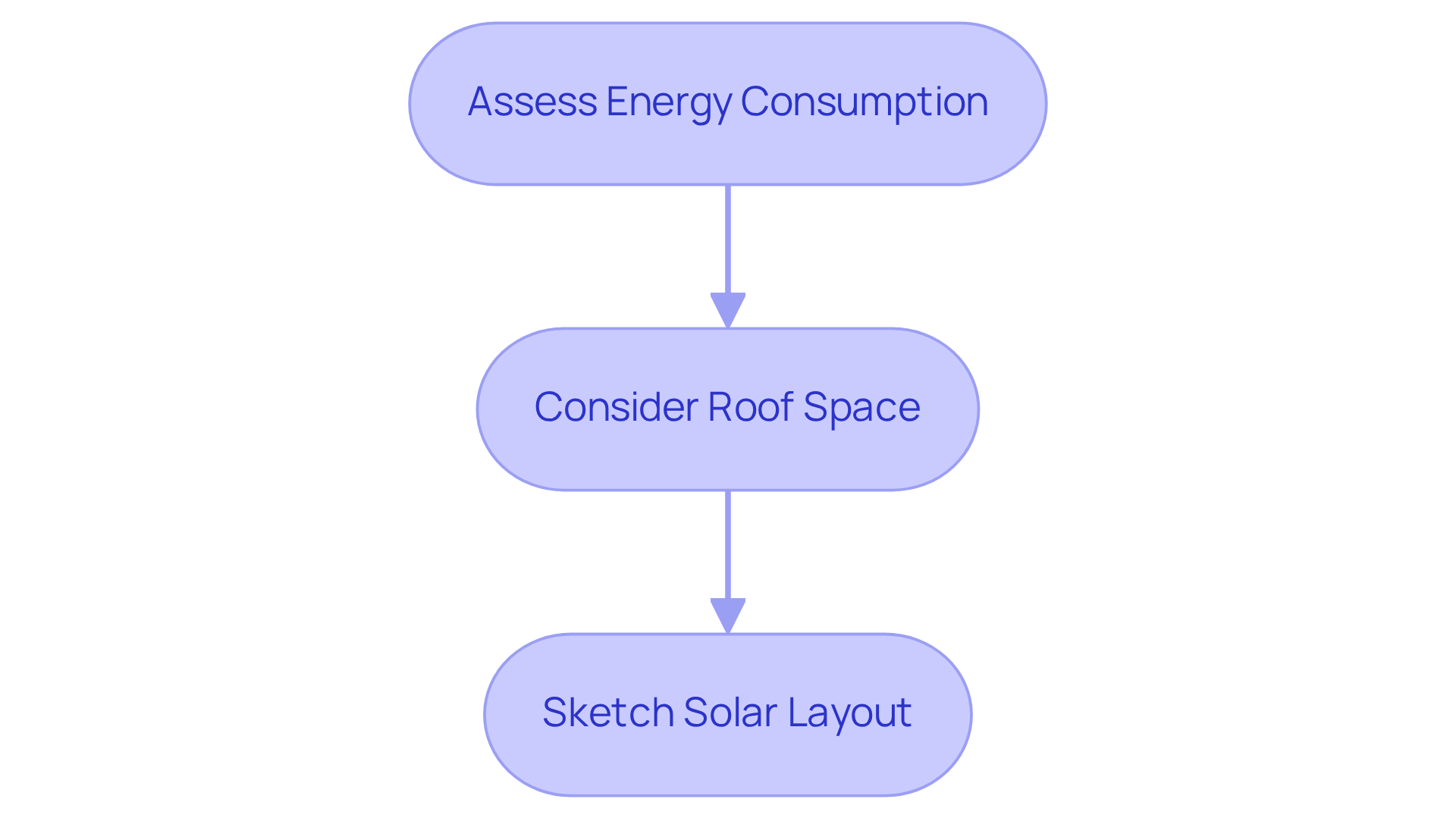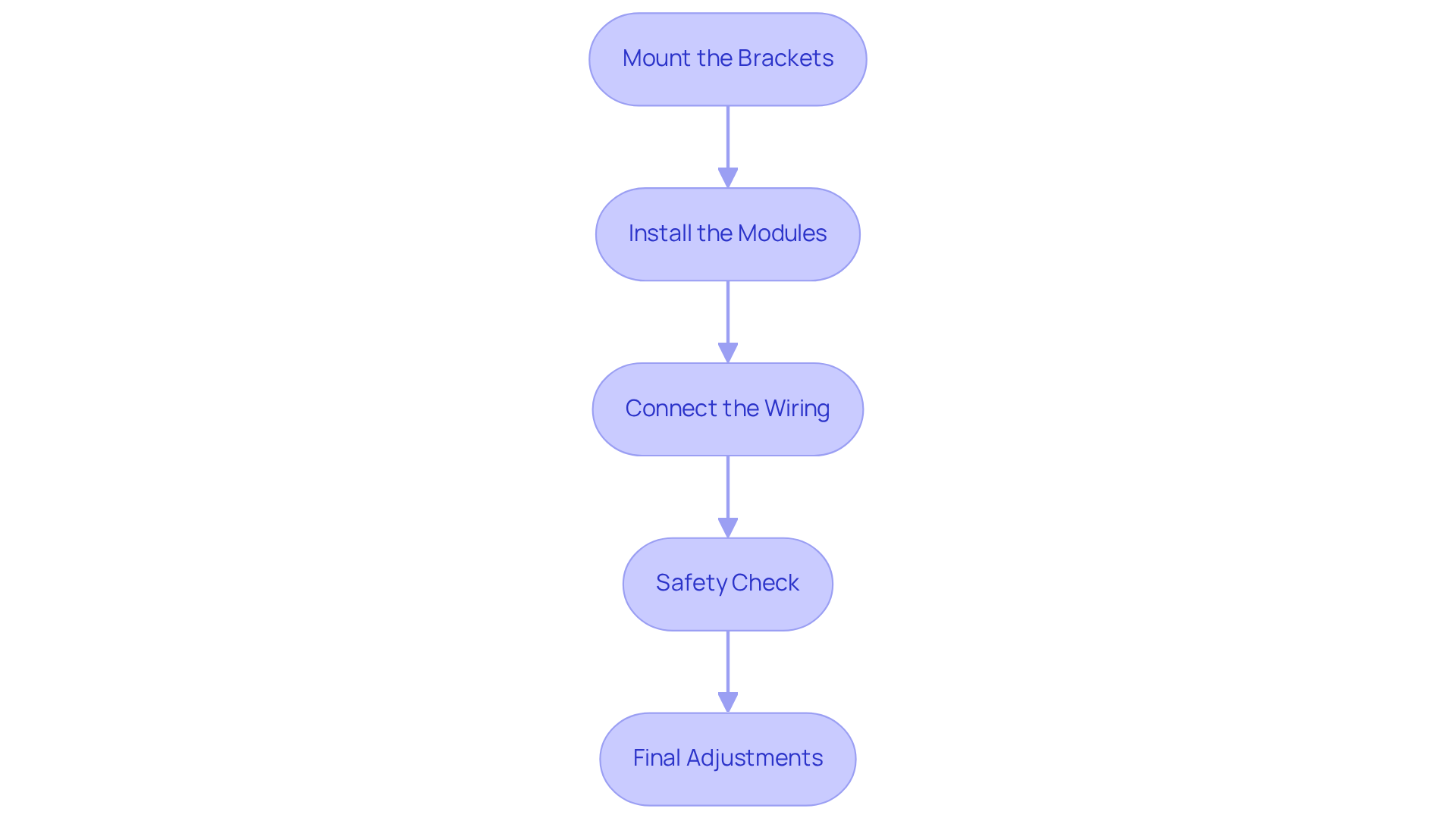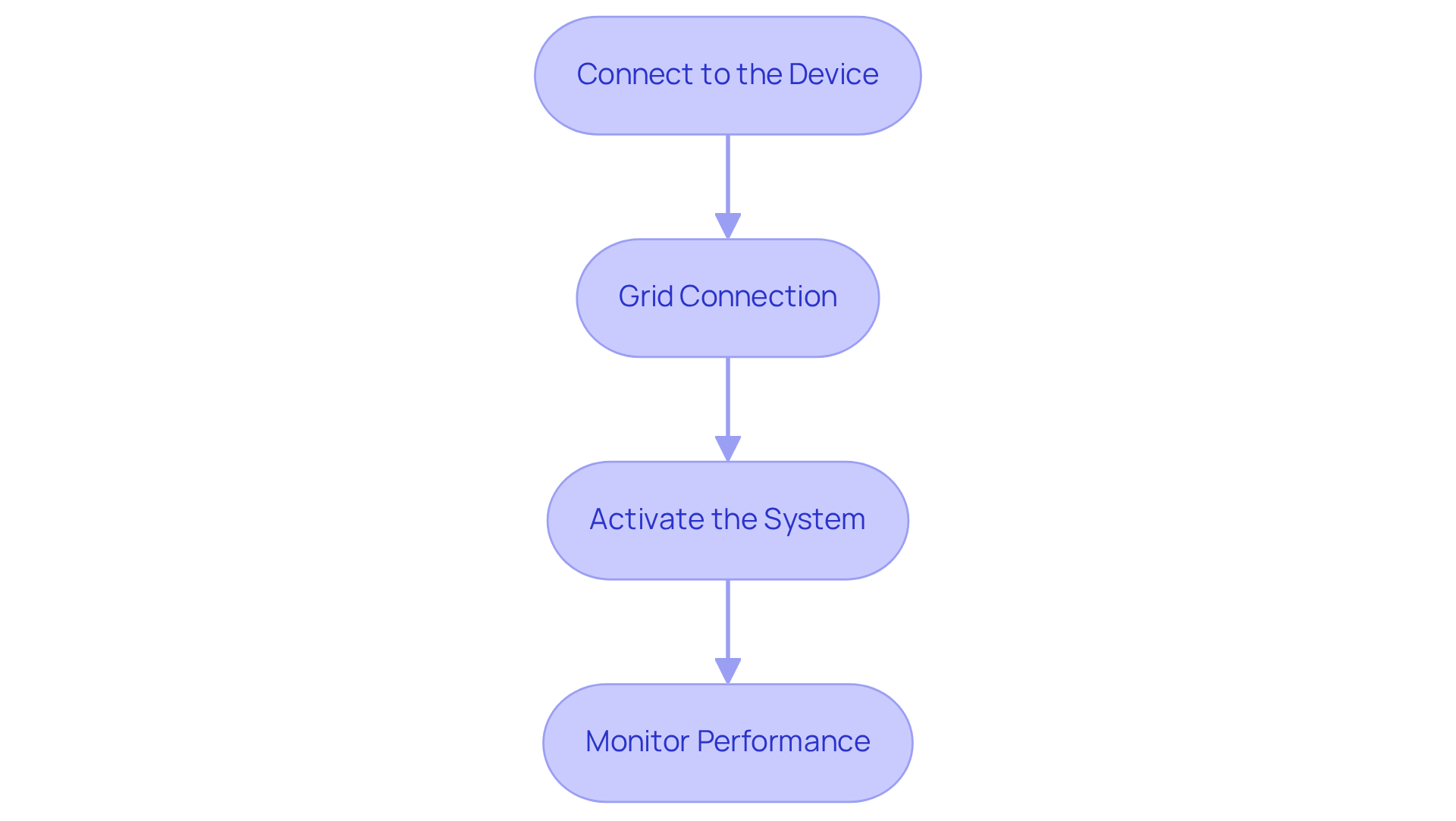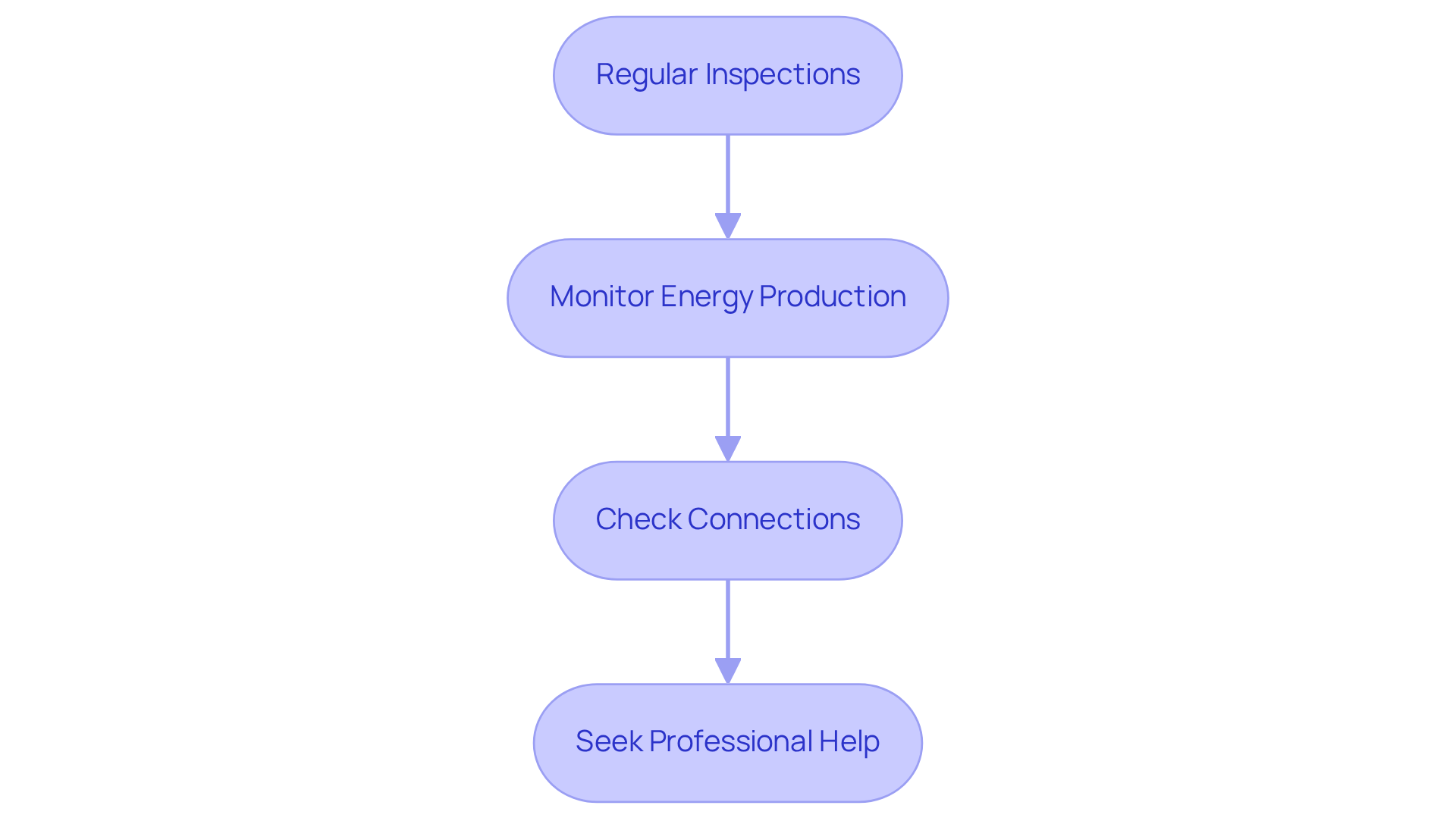Overview
Are you feeling overwhelmed by rising energy bills? You’re not alone. Many homeowners share your concerns and are seeking sustainable solutions to regain control over their energy expenses. The article offers a comprehensive step-by-step guide for eco-conscious homeowners like you, who are eager to install a home solar system themselves.
Understanding the fundamentals of solar energy is crucial. By gathering the necessary tools and materials, you can embark on a journey toward energy independence. Imagine the satisfaction of planning your system design, executing the installation, and finally connecting and activating your solar system. It’s a process that not only empowers you but also significantly reduces your electricity costs.
We understand that maintaining your solar system for optimal performance can seem daunting. However, with the right guidance and support, you can navigate this journey confidently. Together, we can achieve a sustainable future, ensuring that your home is not just a place to live, but a sanctuary of energy efficiency.
Let’s work towards a brighter, more sustainable tomorrow. Are you ready to take the first step? Your journey to energy independence begins now.
Introduction
We understand that many homeowners are feeling the pinch of rising energy bills and are searching for ways to embrace sustainability. Harnessing solar energy has emerged as a pivotal solution for those looking to take control of their electricity costs while contributing to a greener planet. By embarking on a DIY solar project, you can not only reduce your energy expenses but also empower yourself in the journey toward energy independence.
However, it’s common to have questions about installation, system design, and maintenance. How can you ensure a successful transition to solar energy while avoiding common pitfalls? This guide will illuminate the essential steps, tools, and considerations for a seamless home solar installation. Together, we can empower you to take charge of your energy future and make a positive impact on our environment.
Understand Solar Energy Fundamentals
We understand that managing energy bills can be a source of concern for many homeowners. Photovoltaic (PV) cells offer a solution by capturing power from sunlight in arrays. These home solar DIY cells not only convert sunlight into electricity but also empower you to take control of your energy needs, potentially reducing your electricity costs. Grasping fundamental concepts such as:
- Sunlight irradiance
- Power conversion efficiency
- Net metering
is crucial in this journey towards energy independence.
Sunlight irradiance reflects the strength of sunlight received per unit area, while conversion efficiency indicates how effectively your panels transform sunlight into usable electricity. Additionally, net metering allows you to receive credits for any excess energy produced, further alleviating your overall electricity expenses. By familiarizing yourself with these basics, you can truly appreciate the value of your energy investment. Together, we can explore how home solar DIY can not only provide financial relief but also contribute to a sustainable future.
Gather Necessary Tools and Materials
Before embarking on your solar installation journey, it’s important to gather the right tools and materials to ensure a smooth and safe process. We understand that taking this step can feel overwhelming, especially when considering the impact on your energy bills. Here’s what you’ll need:
- Tools: A drill, screwdriver, level, measuring tape, wire cutters, and essential safety gear like gloves and goggles.
- Components: Solar modules, mounting brackets, an inverter, wiring, and a battery storage system if applicable.
Additionally, having a sturdy ladder for roof access and a trusted helper by your side will enhance safety during the installation. Preparing in advance will not only streamline the process but also provide peace of mind as you take this significant step towards energy independence. Together, we can make this transition to sustainable energy a rewarding experience.
Plan and Design Your Solar System
We understand that managing energy bills can be a source of concern for many homeowners. To take the first step towards energy independence with home solar DIY, start by assessing your energy consumption over the past year. This will help you determine how much electricity you need to generate. Utilize your utility bills to calculate your average monthly usage in kilowatt-hours (kWh).
Next, consider the available roof space and its orientation. Ideally, photovoltaic systems should face south to maximize sunlight exposure. Sketch a layout of your roof, indicating possible locations for solar modules while ensuring there are no obstructions, such as chimneys or trees. This planning phase is essential for optimizing your home solar DIY energy system’s performance and can significantly enhance your overall savings.
Together, we can work towards a sustainable future that not only reduces your energy costs but also contributes to a healthier planet. Remember, every small step you take brings you closer to energy independence. If you have any questions or need guidance, please don’t hesitate to reach out—we’re here to support you on this journey.
Install Your Solar Panel System
-
Mount the Brackets: We understand that starting a home solar DIY project can seem overwhelming. Securely attach the mounting brackets to your roof according to the layout you designed, ensuring they are level and spaced appropriately to support your energy goals.
-
Install the Modules: Carefully lift the solar modules onto the brackets and secure them in place. Remember to follow the manufacturer’s instructions for proper installation, as this will help you feel confident in your setup.
-
Connect the Wiring: Link the units to the power converter using the suitable wiring. It’s important to ensure all connections are tight and weatherproof, providing you with peace of mind as you move forward.
-
Safety Check: Before proceeding, double-check all installations for stability and safety. It’s common to feel a bit anxious at this stage, but taking these precautions is essential for your safety and satisfaction.
-
Final Adjustments: Make any necessary modifications to ensure optimal positioning of the display. Together, we can ensure that your home solar DIY system is established for success, paving the way for a more sustainable future.
Connect and Activate Your Solar System
- Connect to the device: We understand that taking the first step can feel overwhelming. Ensure all wiring from the photovoltaic units is securely linked to the equipment, as this is crucial for your system’s success.
- Grid Connection: If applicable, it’s important to connect your device to the electrical panel in your home. This may require a licensed electrician to ensure compliance with local codes, ensuring your peace of mind.
- Activate the System: Follow the directions of the device to activate your solar system. This generally requires activating the power converter and inspecting for any error messages, which can be a bit daunting, but you’re not alone in this process.
- Monitor Performance: Use monitoring software or apps provided by your inverter manufacturer to track your system’s performance and energy production. Remember, together we can ensure that your investment in solar energy is both effective and rewarding.
Troubleshoot and Maintain Your Solar Installation
We understand that managing energy bills can be a source of concern for many homeowners. To help you maintain your solar system effectively, here are some caring suggestions:
-
Regular Inspections: Periodically check your solar modules for dirt, debris, or shading that could affect performance. Cleaning your panels as needed ensures they operate at their best, giving you peace of mind.
-
Monitor Energy Production: Keeping an eye on your energy production through monitoring tools is essential. If you notice a significant drop, it’s important to investigate potential issues promptly. This proactive approach can help alleviate worries about energy efficiency.
-
Check Connections: Ensuring all electrical connections remain secure and free from corrosion is crucial for the safety and effectiveness of your system. Regular checks can prevent future problems and keep your solar system running smoothly.
-
Seek Professional Help: If you encounter persistent issues or complex problems, consulting a professional for assistance is a wise choice. Remember, regular maintenance will help maximize your home solar DIY system’s efficiency and lifespan, allowing you to enjoy the benefits of energy independence for years to come. Together, we can work towards a sustainable future.
Conclusion
Taking the plunge into home solar DIY is a transformative step towards energy independence and sustainability, and we understand that the journey can feel daunting. By grasping the fundamentals of solar energy, gathering the right tools, and following a structured installation process, you can significantly reduce your energy bills while contributing to a greener planet. This journey not only empowers you to take control of your energy consumption but also fosters a collective movement towards a sustainable future.
It’s essential to recognize that careful planning and execution are key. From assessing your energy needs and designing an optimal solar system layout to ensuring proper installation and maintenance, each step plays a crucial role in the overall effectiveness of your solar energy system. Regular monitoring and proactive troubleshooting will further enhance the longevity and efficiency of your installation, allowing you to fully reap the benefits of your investment.
Ultimately, embracing solar energy is more than just a financial decision; it is a heartfelt commitment to environmental stewardship and a sustainable lifestyle. By taking action today, you can lead the way in creating a cleaner, more sustainable future for generations to come. Remember, the journey towards energy independence starts here—let’s equip ourselves with the knowledge and tools to make a meaningful impact together.
